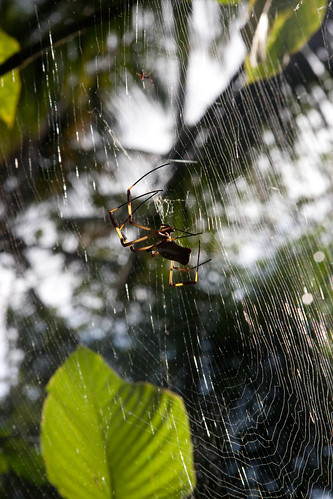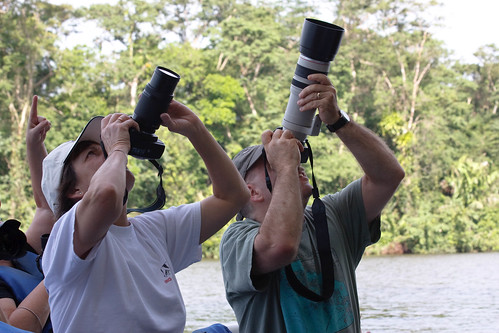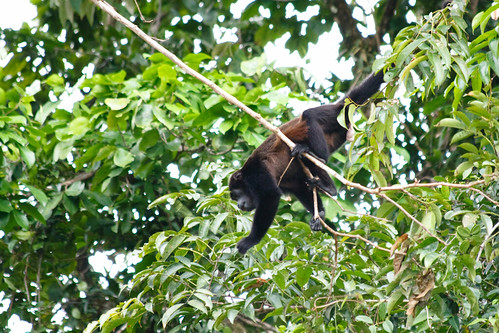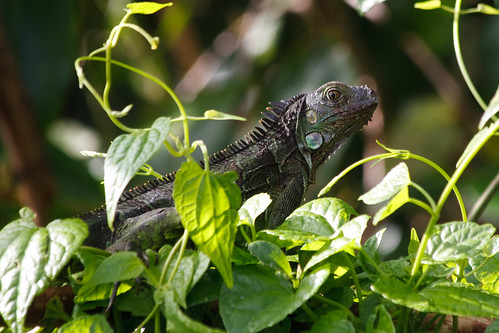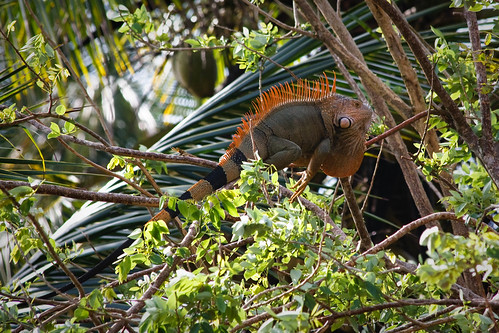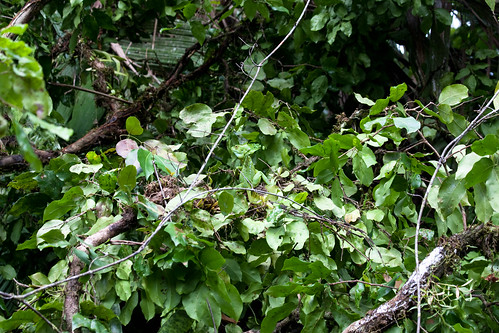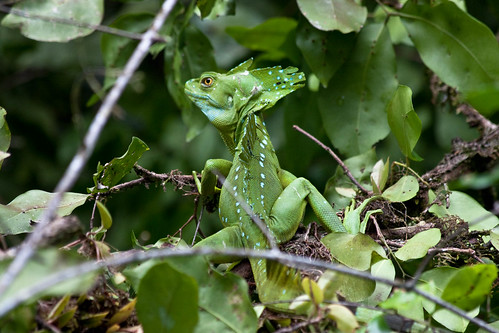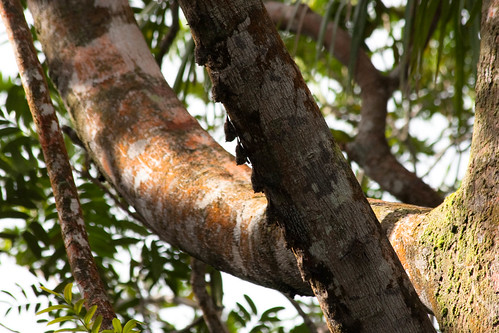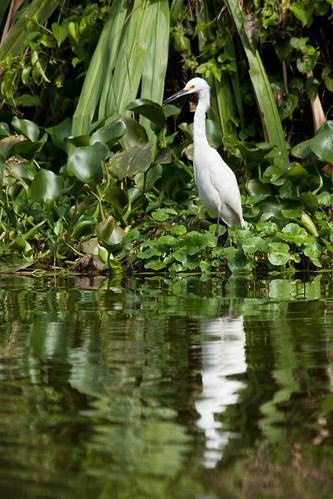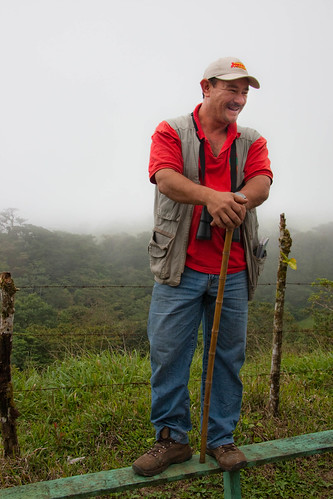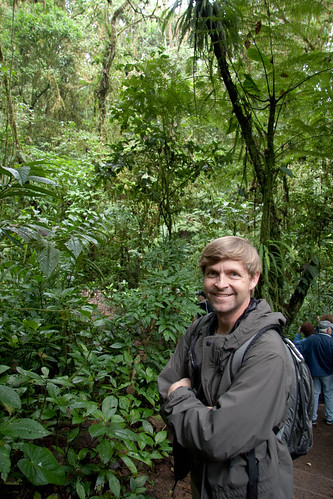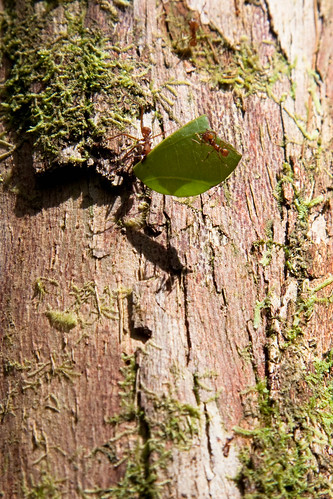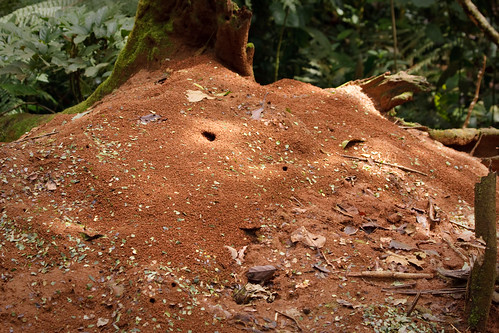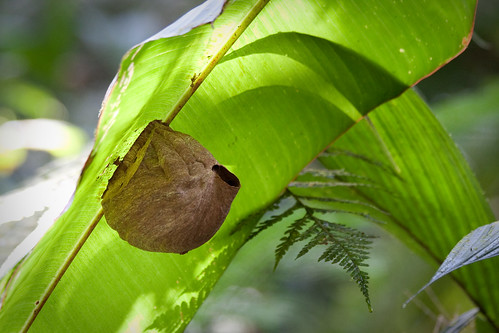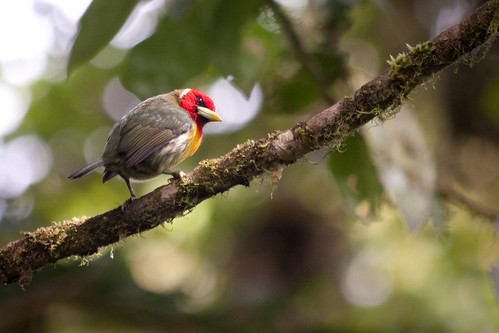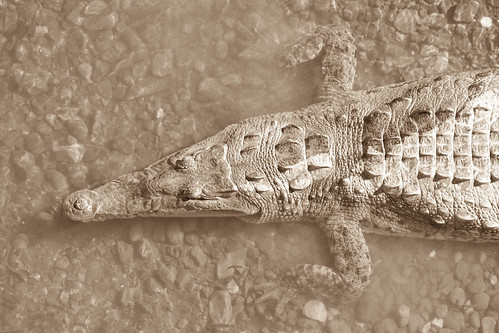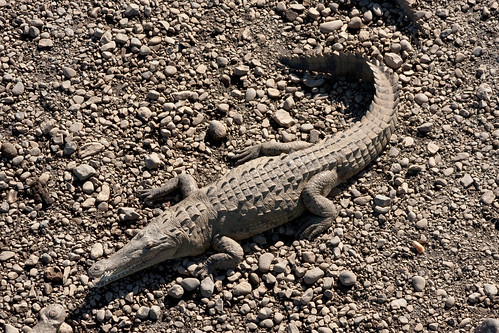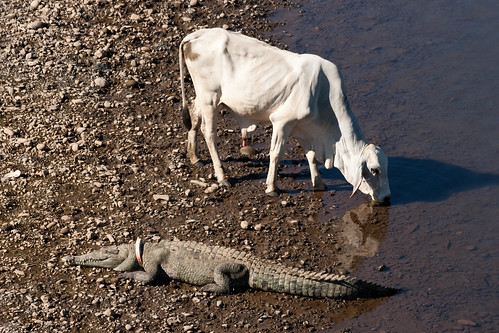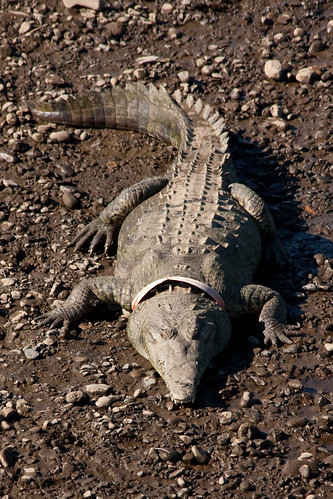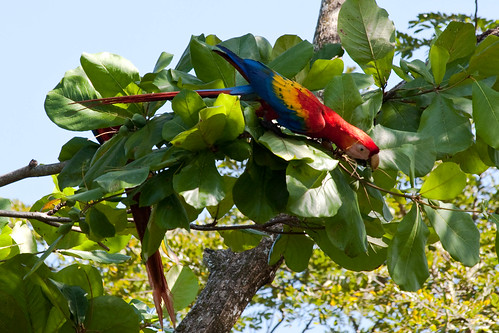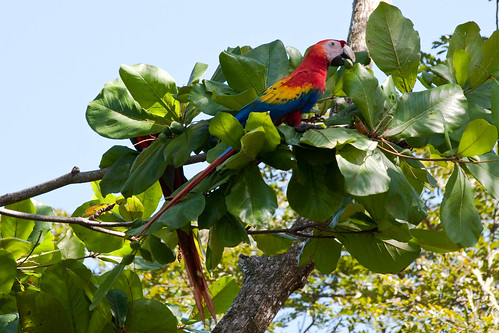After breakfast this morning we visited with the resident spider, who lives on a 3 foot wide web just outside the breakfast area. She was the same type as I saw last night, which leads me to assume that they’re not too dangerous. She was busy repairing her web from, one must imagine, a busy night.
Split into three groups of about 15 each, we loaded into open tour boats for our first visit with the Tortuguero wild life. In a short amount of time we had already spotted more birds that I could keep track of, giant iguanas, spider monkeys and howler monkeys. The tour lasted about two hours, so we had time to go deep back into some of the canals and listen to the sounds of the rain forest.
Back to the lodge for a break, then some more sights.

